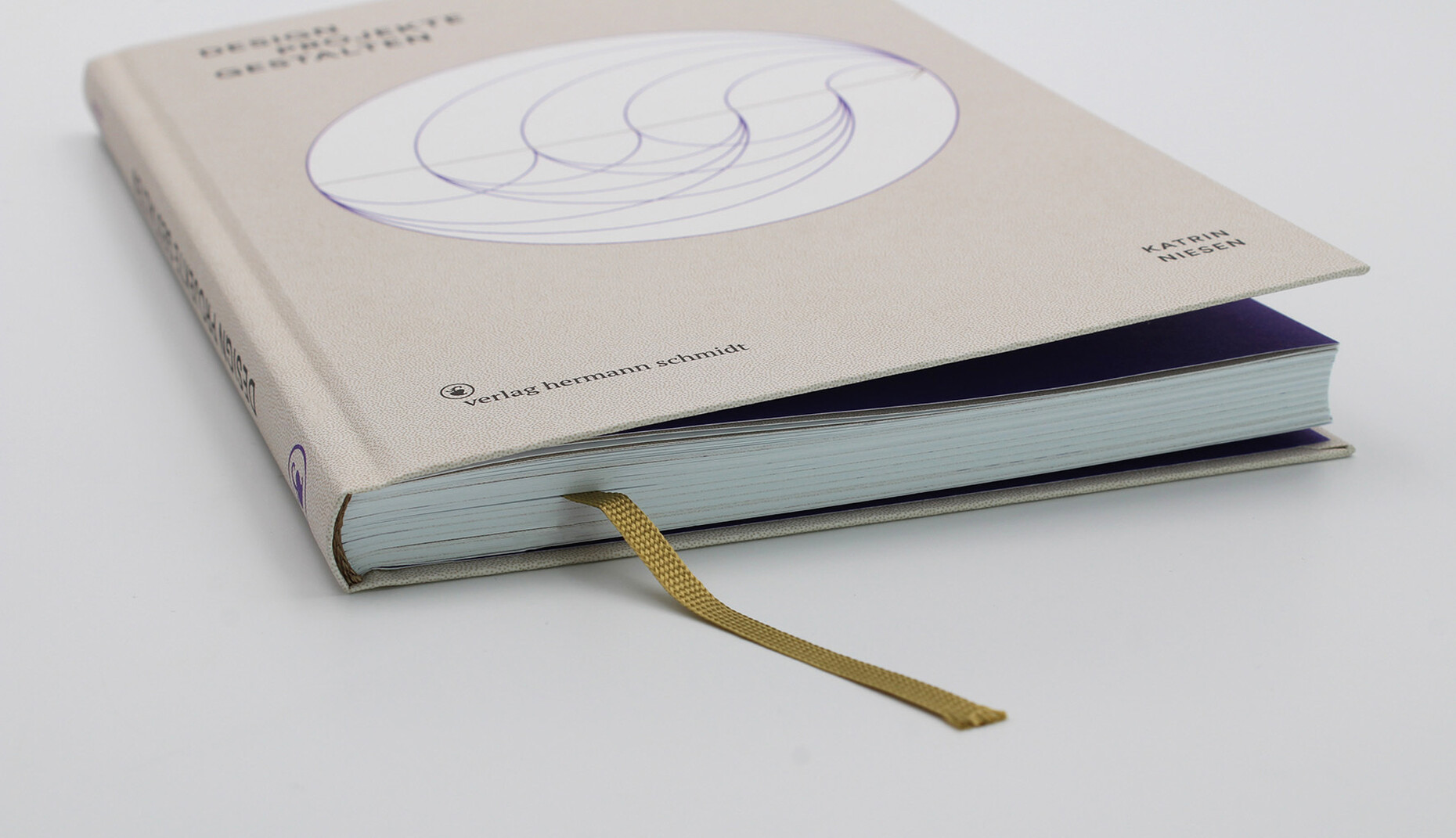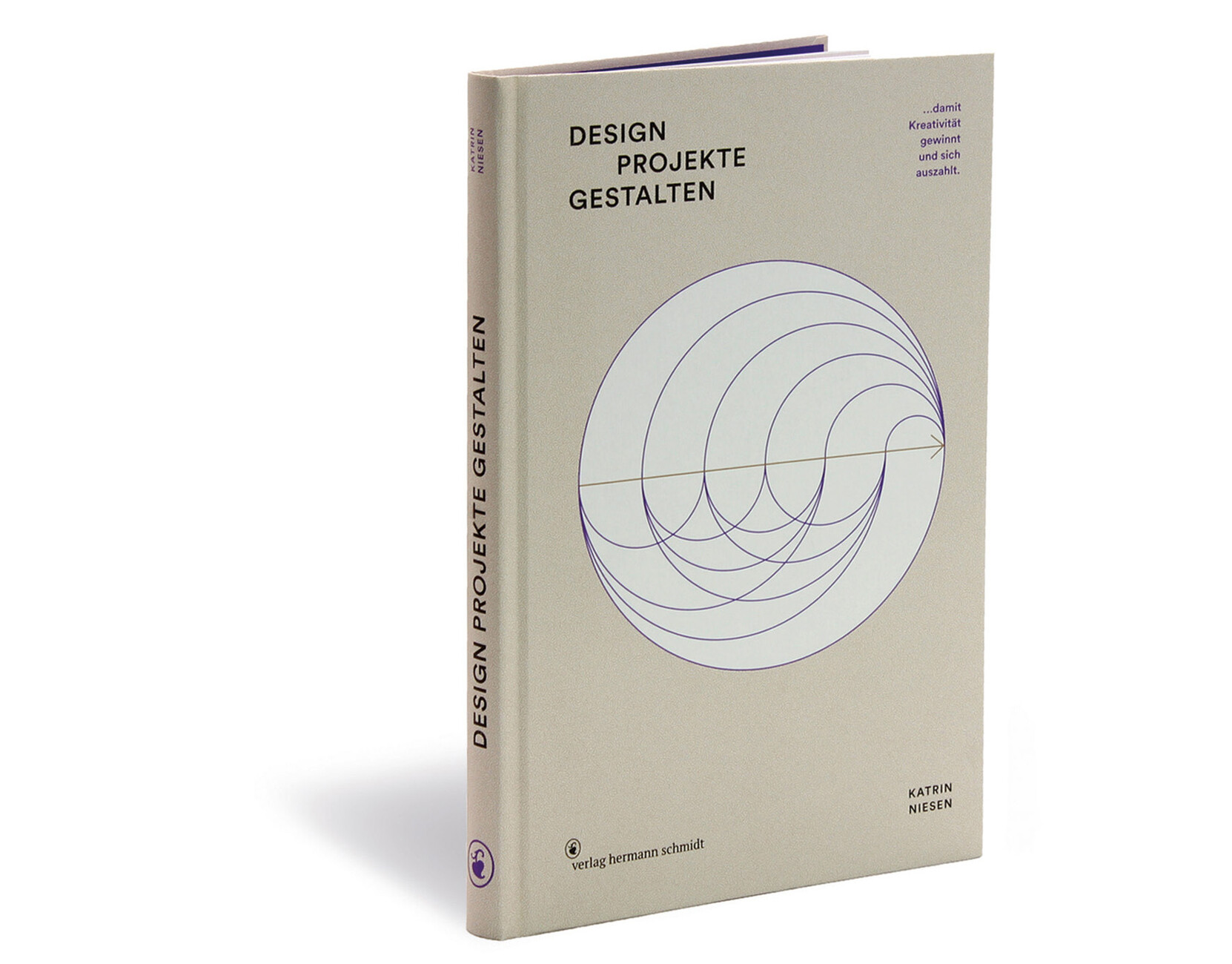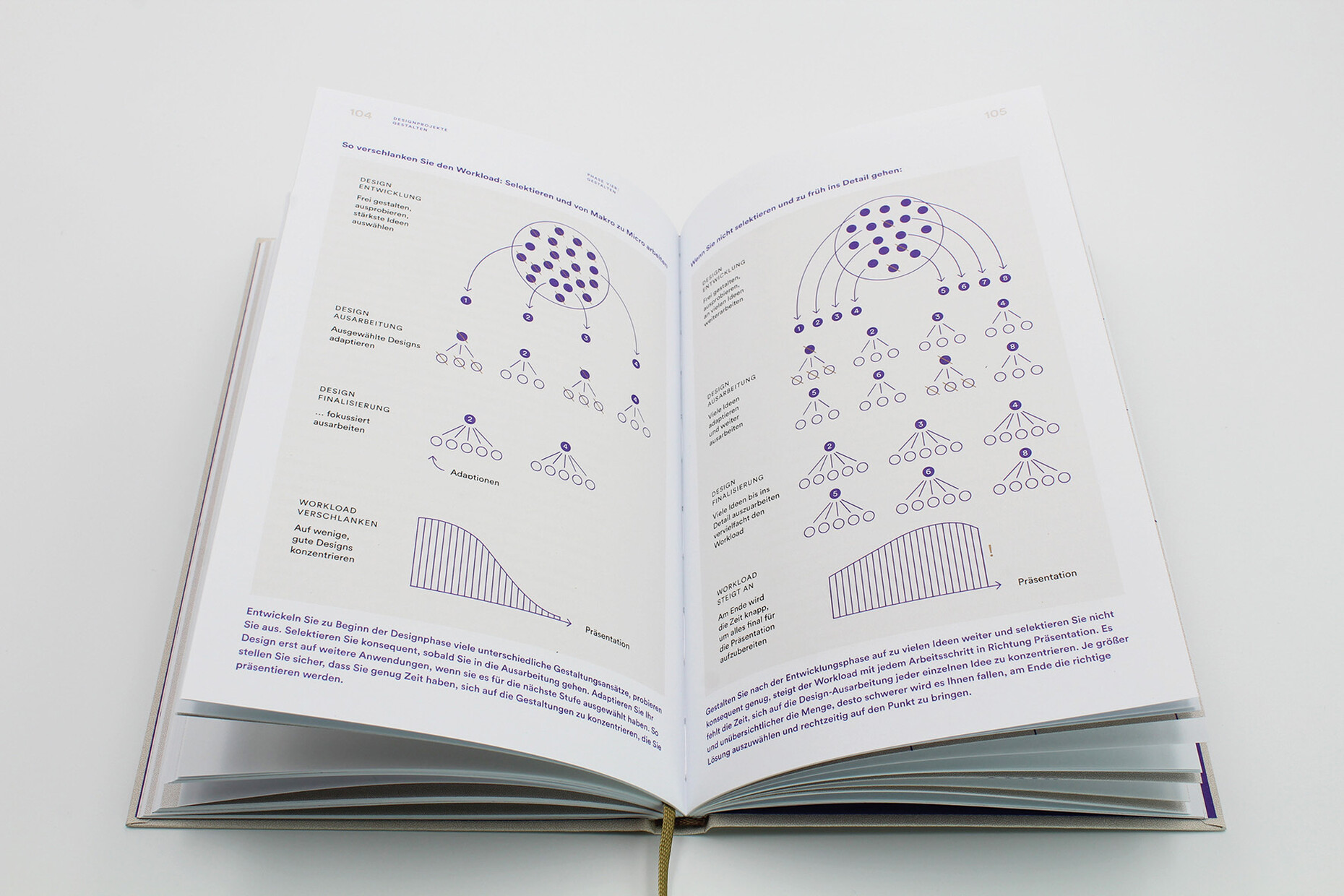Reality check in spot colors
In "Design Projekte gestalten ...damit Kreativität gewinnt und sich auszahlt" (Managing design projects ...so that Creativity Wins and Pays Off), across almost 160 pages author Katrin Niesen elaborates on how to optimize the process of a creative project through a clear organization and constant reflection. She explains what she herself would have liked to know at the beginning of her career, where pressure can arise in processes and what work steps are needed to relieve it. Translated into work routines, this practical guide is also intended to provide security in the workflow. The designer who specializes in product branding and packaging design, has been working in agencies for 25 years, partly in leading positions. Today, she runs her own studio in Hamburg's HafenCity together with her colleague Maike Bischoff and offers workshops in addition to advising on conception and strategy. Her publication also comes across like an intensive workshop, as each chapter contains a multitude of questions to help the reader in each individual case assess and ideally manage the project and the workload involved in organization and creation. Since the sheer amount of interaction required can quickly become overwhelming it is advisable to select the chapters that match one's own project phase, from basic planning to presentation. Niesen deals in detail with both factual and human aspects, from calculating the value of one's own work to the importance of empathy in the design profession. In her explanations, the author mostly concentrates on the core aspects and offers practical tips and further links. Where suitable she also occasionally draws on graphics, such as an example of a streamlined workload. Templates are also available for download: be it for a rebriefing or in the form of a questionnaire for evaluating ideas and design.
In addition to conveying professional competence, Katrin Niesen wants to motivate readers not to underestimate their own abilities and to this end asks self-critical questions such as "Am I good enough?". In other words, the scope of themes ranges from efficient project management, via the challenges of professional self-employment as a designer through to achieving positive self-esteem. The book is also intended to appeal to both career starters and experienced professionals. However, this broad spectrum of content does sometimes result in not every topic being devoted equal attention – for example, the author only skims the surface of market research, while she looks in greater depth at how people working in the design profession can overcome a sense of insecurity. Design-wise, it was decided to give the book in 15 x 23 cm format a rather unobtrusive, graphic cover and a high-quality thread stitching. Except for the foreword by Karin and Bertram Schmidt-Friderichs, gendering was dispensed with in favor of reader-friendliness. At the same time, however, the content is mainly printed in the glossy spot colors bronze and violet, which unfortunately makes it difficult to read. What is helpful, though, is the division of the project phases into chapters and the clear listing of the work steps recommended by Katrin Niesen in each case – such as the "Design Analysis in Four Steps".
To summarize, "Design Projekte gestalten ...damit Kreativität gewinnt und sich auszahlt" (Managing Design Projects ...so that Creativity Wins and Pays Off) is a compact reference book that mainly provides valuable suggestions and assistance to newcomers to the profession in order to take into account as many potentially relevant aspects as possible in the structuring, calculation and implementation of a creative project. This structure provides a good basis for handling individual projects.

Katrin Niesen: Managing Design Projects ...so that Creativity Wins and Pays Off.
Design: Eva Finkbeiner
Thread-stitched flex cover, 15 x 23 centimeters, circa 160 pages
Language: German
Publisher Hermann Schmidt GmbH & Co. KG, Mainz 2021
ISBN 978-3-87439-942-5
29.80 Euros








